The Sandia Peak Tramway, just outside Albuquerque, New Mexico, claims the distinction of being the world’s longest aerial tramway.  Situated on the valley floor at an elevation of 6559′ above sea level, the tram base station (seen in the photograph above) is the starting point for a tram ride which will take you to the top of the Sandia Mountains. The journey entails a 2.7 mile long ride, which crosses two support towers on it’s way to the mountaintop station, where the elevation sign tells you that you have reached an elevation of 10,378′.
In the photograph above, while you can see both of the support towers, the mountaintop station remains out of sight. The second tower, which you can see is perched atop a ridge, sits about halfway between the base and mountaintop stations. So the stretch of cable that you see in the picture is actually only about half of the total length over which the tramway travels on it’s way to the top.
I don’t know about you, but when I contemplate stepping aboard a tram car which will be suspended up to 1000′ above the ground below, I think about the robustness of the machinery in which I will be entrusting my fragile body. So it is with a keen eye that I survey the general condition of the tramway equipment.
The two photographs above show some of the visible machinery that powers the tramway. While a cursory visual inspection of the equipment (by an untrained and unqualified inspector such as myself) really provides no actual useful information, it still serves to quell my jitters about the impending ride I am about to embark upon ;)
The tram gondola is suspended from a tri-cable system. The two outer cables, which are stationary, actually provide the support for the car, while the third cable (in the center) serves to haul the gondola up the mountain. The cables are designed in such a way that any one of them is capable of supporting the gondola if the need arose (or so I was assured by the gondola operator).
If you look closely at the photograph above, you will see a ladder that is affixed to the gondola support. Every morning, before the public may board the tram, maintenance employees make an inspection run up and down the mountain. One employee rides on the roof of the gondola, while another one stands at the top of the ladder pictured above, inspecting the cables along the entire length of the tramway.
Now that I have reassured myself that the round-trip journey on the tramway will not jeopardize life or limb, I am prepared to board the tram for the ride to the top of the mountain. The tram car can be seen departing the base station above, beginning the approximately 15 minute trek to the mountaintop station.
As the tram car rises in elevation, the city of Albuquerque appears smaller and smaller as each minute ticks by.
As spectacular as the view is looking down toward Albuquerque, you will find the scenery provided by the canyons along the steep mountainsides to be equally dramatic.
The tram will traverse four ecological life zones along the way from bottom to top: the Upper Sonoran Zone (6500′), the Transition Zone (7200′), the Canadian Zone (8500′), and the Hudsonian Zone (10,000′). An information sign indicates that this is the equivalent to traveling from Mexico to Alaska, although I do not quite understand how zone changes as a result of elevation gain equate to a northward progression of latitude (readers – please feel free to educate me on this point).
After a wonderfully scenic 15 minute ride, the tram car arrives at the mountaintop station, where passengers disembark to enjoy the activities available at the top of the mountain.Â
As you may imagine, the views available from the mountaintop station, situated at 10,378′ are grand.
On a clear day, approximately 11,000 square miles of New Mexico landscape are visible from the top of the mountain. There are several viewing platforms available, and each one has a clever viewing aid, as shown above. Each of the steel sighting tubes are aimed at a particular landmark. By keying each tube to a legend on the chart, it is easy to identify the prominent features that are visible to the viewer.
There are many activities available to those who arrive at the mountaintop. There are 24 miles of mountain trails available to hikers and bike riders, which meander along the rugged terrain of the Sandia Mountains.
In the winter, skiers can utilize the services of 4 chair lifts and 2 surface lifts. In the summer, chairlift rides (along the back side of the mountain) are available on weekends, and mountain bikes can be rented for trail exploration. The Four Seasons Visitor Center is located atop the peak, and is staffed May through November with Forest Service Rangers and volunteer interpreters. Besides the Double Eagle II cafe, the High Finance restaurant, specializing in steaks, prime rib and seafood, is located at the top of the mountain.
When you have had your fill of activities, you will board a tram car for the 2.7 mile journey back down to the base station. As your tram car descends, it will eventually cross paths with the ascending tram car, which serves to mark the halfway point of the trip. Each car travels at 13.5 MPH, so the closing speed between the two gondolas is 27 MPH. When viewed from the perspective inside a tram car, 27 MPH is pretty speedy, especially if you are trying to take a photograph of the passing tram car.
Reaching the base station, your trip has ended in a mere 15 minutes, but the memories will probably last a lifetime. If you are traveling in the vicinity of Albuquerque, it is well worth the $17.50 (adult) fare to experience a ride on the longest aerial tramway in the world. I highly recommend it, and don’t forget your camera and hiking boots.

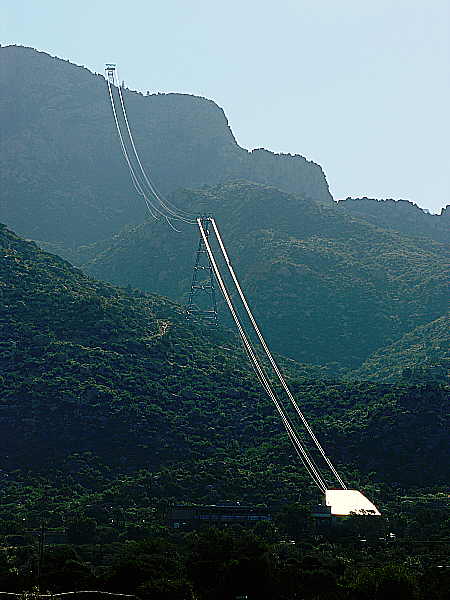
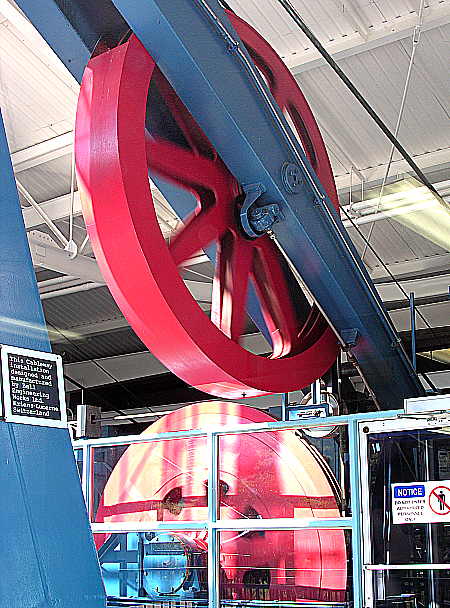
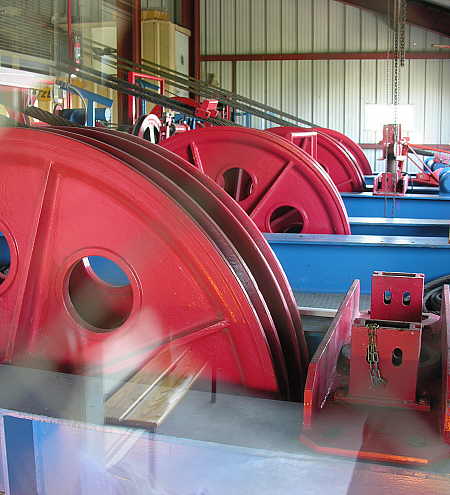
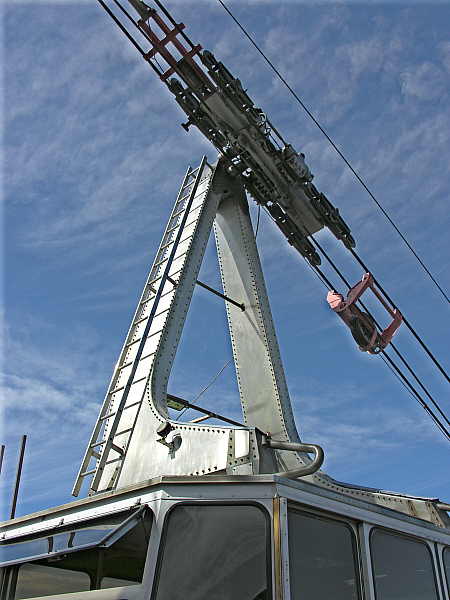
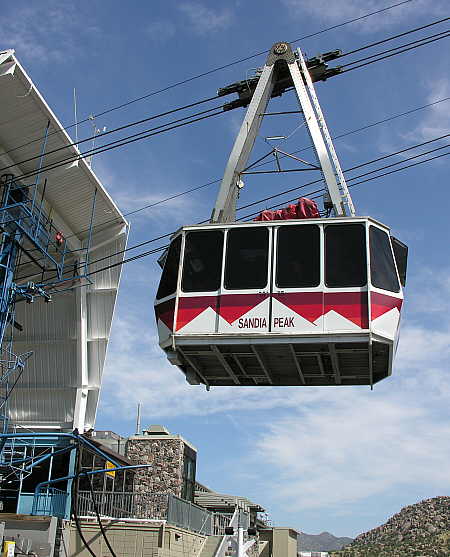
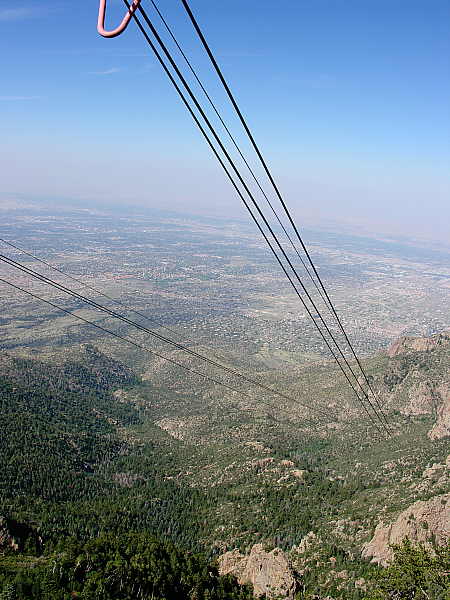
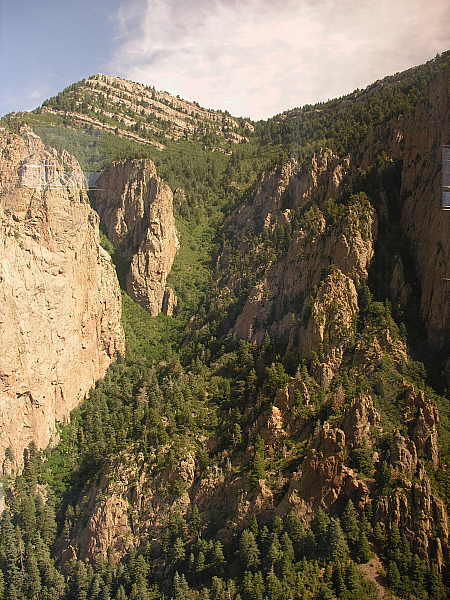
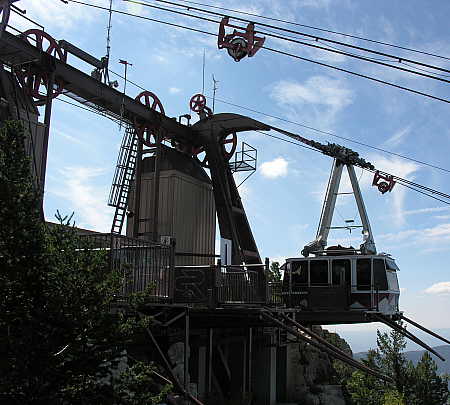
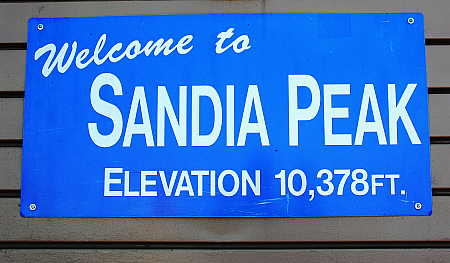
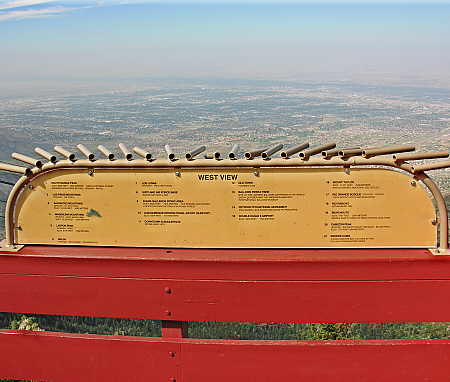
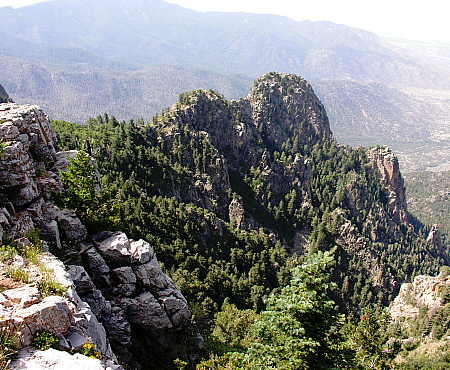
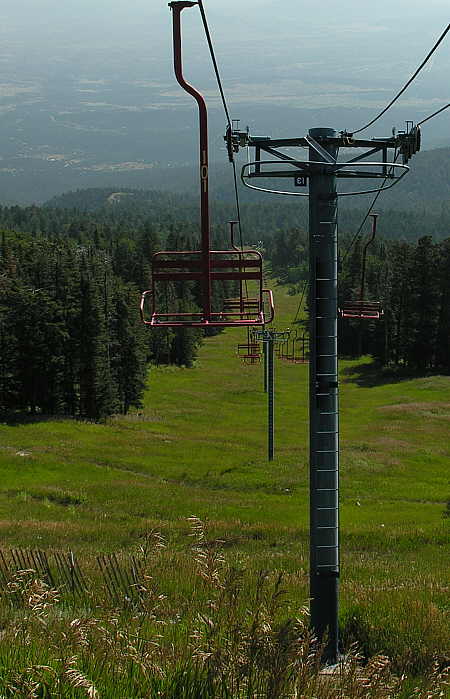
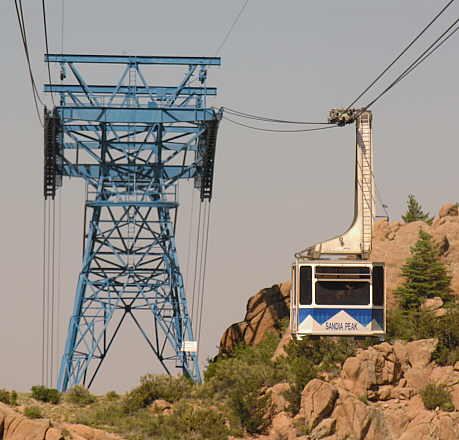
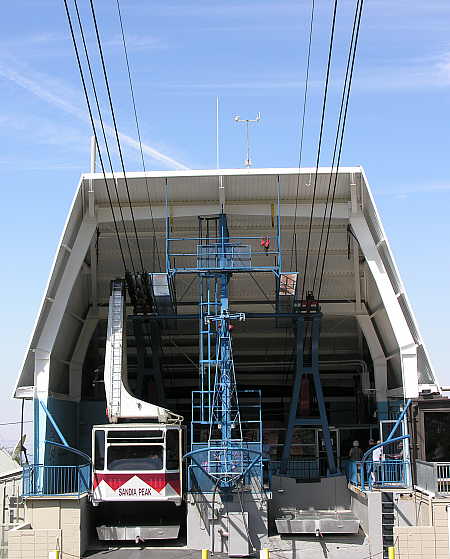


I’m sure it’s not a problem, but I would wonder about that much descent in altitude in such a short time. As I think of it, though, skydivers travel much farther much faster, and as long as their chute opens, they suffer no ill effects.
As an engineer, I can’t help but start multipling the weight of the gondolas, plus occupants plus number of them between towers and calculating how much force is being exerted on the cables. However this one sounds like it only has two which would ease my calculations considerably but probably not my peace of mind.
Years and years ago, when I rode the tram up the mountain, there was a restaurant at the top with a beautiful view, particularly at night. After all this time, I don’t remember the food at all, but I remember the tram ride, the view, and the friends with me.
Nicest description I have seen! Excellent job! LuAnn and I went up the tram a few years ago, you brought the memories back!
My wife Abby and I rode the aerial tramway on our first vacation together, more than a year before we were married, in July 2003. She’d never been to that part of the west, and was absolutely amazed and delighted with the ride and the views.
I enjoyed your post about this attraction very much.
Here is a link to that trip if you are interested…
http://richardbarron.net/traveller/2003/07/30/the-high-road-july-2003/